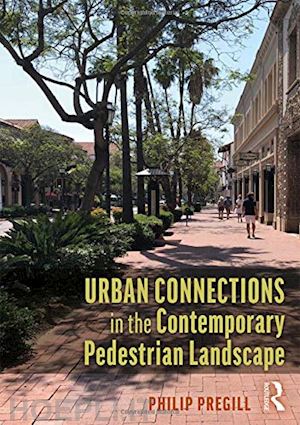1. Contexts and Connections. 1.1 Physical and Cultural Factors. 1.2 Connections: History and Function. 1.3 Function and Opportunities. 1.4 Influences: From Form to Places. 1.5 Complexity and Coherence; Legibility and Orientation. 1.6 Aesthetics and Identity. 1.7 Contexts and Contemporary Sources. 1.8 From Contexts to Experience. 2. Connections and Pedestrian Experience. 2.1 Contexts and Primary Factors. 2.2 Connection affordance: sources and opportunities. 2.3 Gestalt, Ecological, and Predictive Coding Influences. 2.4 Contexts and Sources; Intention and Experience. 2.5 Location, Movement and Time. 2.6 Preferences and Standards. 2.7 Inductive and Deductive Applications. 2.8 Aesthetics and Identity. 2.9 Arterial, Collector and Local Connections. 3. Arterials: Conveyance and Access. 3.1Structure and Function. 3.2 Orientation and Connection. 3.3 Standards and Preferences. 3.4 Walkability: Intersections, Cross-walks. 3.5 Medians: Functions and Applications. 3.6 Complete Streets and Urban Greening. 3.7 Tactical Urbanism; Inductive and Deductive Opportunities. 3.8 Contemporary Applications and Opportunities. 4. Collectors: Diversity and Focus. 4.1 Mid-way Connections: Structure and Function. 4.2 Pedestrian Preferences and Standards. 4.3 Intersections and Cross-Connections. 4.4 Cross-walks; edges and Places. 4.5 Contemporary Applications and Effects. 4.6 Places and Interventions. 4.7 Green Avenues and Smart Streets. 4.8 Inductive and Deductive Influences; Aesthetics and Identity. 4.9 Contemporary Applications and Prospect. 5. Local Connections: Scale and Places. 5.1 Scale and Enclosure; Surfaces and Places. 5.2 Function and Standards. 5.3 Interior Transitions: Places and Details. 5.4 Contemporary Applications: Permanent and Temporary. 5.5 Green Alleys and Places. 5.6 Guerilla Gardening; Tactical Urbanism. 5.7 Experience, Aesthetics, and Identity. 5.8 Issues, Strategies and Prospect. 6. Contemporary Connections: Resources and Initiatives. 6.1 Community Vision and Outcomes. 6.2 Connections and Walkability.6.3 Connections and Livability. 6.4 Contemporary Applications: Public and Independent. 6.5 Urban Greening: Connections and Places. 6.6 Smart Cities; Smart Streets; Complete Streets. 6.7 Information technology and Holistic Streets. 6.8 Opportunities: Working with the Context. 6.9 Inductive and Deductive Reponses. 6.10 Pedestrian Experience; Urban Identity. 7. Vision, Preferences, and Strategies. 7.1 Community Vision. 7.2 Safe streets. 7.3 Walkability and Livability. 7.4 Shared Streets. 7.5 Complete Streets. 7.6. Aesthetics and Identity. 7.7 Preferences: Safety and Walkability. 7.8 Edges and Amenities. 7.9 Inductive and Deductive Influences and Identity. 7.10 Strategies and Initiatives. 7.11 Downtown Contexts. 7.12 Connections and Prospect. Index












